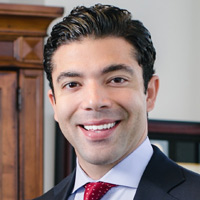Don't Let Bad Timing Be Your Biggest Retirement Mistake
Prolonged stock market drops, especially early in retirement, can be utterly devastating. To protect yourself, break out the bucket strategy.


Despite cautionary tales you might hear about how Americans are failing at saving for retirement, plenty of people get it right.
They work hard and start saving early. They make the most of 401(k) and other investment accounts, and they accumulate as much as they can in a diversified portfolio.
Unfortunately, for some, that won’t be enough, because if they don’t take the proper steps to protect their money, they still could run short in retirement.
From just $107.88 $24.99 for Kiplinger Personal Finance
Become a smarter, better informed investor. Subscribe from just $107.88 $24.99, plus get up to 4 Special Issues

Sign up for Kiplinger’s Free Newsletters
Profit and prosper with the best of expert advice on investing, taxes, retirement, personal finance and more - straight to your e-mail.
Profit and prosper with the best of expert advice - straight to your e-mail.
It’s a Mistake to Count on Stocks for Income
That’s a hard thing to have to tell prospective clients when they proudly produce their statements and talk about how relieved they are to have reached their retirement “number.” Wall Street has convinced a lot of retirees that it will be easy to turn their investments into the income they’ll require when they no longer earn a paycheck. All you have to do is “pull a percentage” from your portfolio every year. Need a little extra? Maybe sell some shares of Amazon.
Thanks to a record-setting bull market, that strategy may seem to make sense. Stocks have been the rock stars in most retirement accounts for more than a decade now, but many stocks aren’t meant to produce retirement income — they’re meant for long-term appreciation. Those who forget that — and ignore what happened to friends and family who retired in 2000 or 2008, just as stock prices plunged — are putting their own retirement at risk.
A recession just before or after you enter retirement can devastate even the most promising portfolio. How the stock market performs as you begin taking withdrawals can have a dramatic effect on your nest egg. It’s called sequence of returns risk, and it means the less time you have to make up for losses, the more important it becomes to protect your principal.
Why Poor Bob Ran Out of Money
To demonstrate the danger, I often use the hypothetical example of Bob and Susan. Each entered retirement at age 65 with a $500,000 portfolio. Each started taking withdrawals of 5% each year and increased those withdrawals by 3% each year to keep up with inflation. Each averaged an 8.03% annual return, and each experienced big losses for three consecutive years. (For a detailed look at Bob and Susan’s portfolios year by year, view the charts at nicholaswealth.com.)
Bob and Susan, however, had significantly different results based on when those market losses occurred.
Bob encountered major losses in the beginning of his retirement, when he was around age 65 or 67, and because he kept withdrawing money from his depleted savings, he ran out of money at age 83. Susan had the same big losses — almost $1 million from the time she was 87 to age 89, but because those losses came later in retirement and her money had decades to grow before it happened, she still has $1,677,975 — enough to last through the rest of her retirement and probably enough to pass some on to her beneficiaries when she dies.
To Avoid Being Bob, Break Out the Buckets
After years of saving, to think that success or failure could come down to a random decision about when to retire is pretty scary, right?
The good news is you can help avoid sequence of returns risk with something called a “bucket strategy,” in which you split your assets among three buckets, based on when you’ll need your money. I call these buckets “liquid,” “income” and “growth.”
- The liquid bucket is there primarily as an emergency fund. You can use it for home or car repairs, a medical bill or some other big expense that might come up (just as you would use a rainy-day fund before retirement). I recommend keeping enough to cover at least six months of living expenses. That way, you won’t be forced to sell your stock if you happen to experience an unexpected financial snag. If you need to access funds quickly, you’ll probably want to keep this money in a high-yield savings account.
- The income bucket is the part of a portfolio that’s protected and generates interest or dividends. It’s the bucket you’ll make withdrawals from in the first 10 years of retirement. It could include dividend-paying stocks, short-term bonds and/or insurance contracts. As you move through retirement, you can depend on the money from these investments — which are typically safer and more reliable — to pay your bills for at least 10 years. That’s how you avoid being Bob.
- Bob depended on the growth bucket for his retirement income. Although the growth bucket is great for long-term appreciation, growth stocks should not be used to generate income during the first 10 to 12 years of retirement. They are in place to help you keep up with inflation and refill the income bucket if necessary, down the road. During a recession, you won’t have to sell stocks at a loss if the market is down, because your income needs should be fully met by your liquid and income buckets.
We all want to be Susan and end up with more money near the end of retirement than when we started, but in this example, her timing was just lucky. She had been retired for 20 years before she took the same big hit Bob took in his first three years. Bob couldn’t have predicted his predicament, and Susan couldn’t have foretold her good fortune.
The good thing is, you don’t have to worry as much about timing if you’re prepared.
If you know when you hope to retire, whether it’s around age 60, 65 or 70, it’s a good idea to build your buckets about five to 10 years earlier. In that way, if there’s a recession before your planned retirement date, you won’t have to delay or downsize your plans or, worse, go into retirement knowing you might run out of money.
Why leave your future to chance? Protecting a portion of your assets against losses may be the single most important step you can take toward financial security in retirement. Talk to your financial adviser about what strategies would work best in your buckets and how to transition your portfolio from accumulation to preservation.
Kim Franke-Folstad contributed to this article.
Securities offered through World Equity Group, Inc., members FINRA and SIPC. Investment advisory services offered through BluePath Capital Management, LLC / DBA Nicholas Wealth Management. Nicholas Wealth Management and World Equity Group, LLC are separate entities.
The appearances in Kiplinger were obtained through a PR program. The columnist received assistance from a public relations firm in preparing this piece for submission to Kiplinger.com. Kiplinger was not compensated in any way.
Profit and prosper with the best of Kiplinger's advice on investing, taxes, retirement, personal finance and much more. Delivered daily. Enter your email in the box and click Sign Me Up.

David Nicholas is president and founder of Nicholas Wealth Management (www.nicholaswealth.com). He maintains FINRA Series 7, 63 and 65 securities designations and has life and health insurance licenses in Georgia.
-
 Holiday Tax Scams: 'Tis the Season to be Wary
Holiday Tax Scams: 'Tis the Season to be WaryTax Scams Navigating tax tricks of the holiday season may be daunting, but don't let that destroy your festive spirit
-
 Metro by T-Mobile Is Giving Away This Samsung Galaxy A16: Which Plans Are Eligible?
Metro by T-Mobile Is Giving Away This Samsung Galaxy A16: Which Plans Are Eligible?Metro by T-Mobile is offering free Samsung Galaxy A16 phones on eligible plans right now. Here’s how the deal works.
-
 I Drive and Collect Classic Cars: Here’s How I Got Started
I Drive and Collect Classic Cars: Here’s How I Got StartedAre classic cars a hobby or an investment strategy — or both? Either way, the vintage car scene is much cooler and more affordable than you think.
-
 The $183,000 RMD Shock: Why Roth Conversions in Your 70s Can Be Risky
The $183,000 RMD Shock: Why Roth Conversions in Your 70s Can Be RiskyConverting retirement funds to a Roth is a smart strategy for many, but the older you are, the less time you have to recover the tax bite from the conversion.
-
 A Financial Pro Breaks Retirement Planning Into 5 Manageable Pieces
A Financial Pro Breaks Retirement Planning Into 5 Manageable PiecesThis retirement plan focuses on five key areas — income generation, tax management, asset withdrawals, planning for big expenses and health care, and legacy.
-
 4 Financial To-Dos to Finish 2025 Strong and Start 2026 on Solid Ground
4 Financial To-Dos to Finish 2025 Strong and Start 2026 on Solid GroundDon't overlook these important year-end check-ins. Missed opportunities and avoidable mistakes could end up costing you if you're not paying attention.
-
 Are You Putting Yourself Last? The Cost Could Be Your Retirement Security
Are You Putting Yourself Last? The Cost Could Be Your Retirement SecurityIf you're part of the sandwich generation, it's critical that you don't let the needs of your aging parents come at the expense of your future.
-
 5 Smart Things to Do With Your Year-End Bonus, From a Financial Professional
5 Smart Things to Do With Your Year-End Bonus, From a Financial ProfessionalAfter you indulge your urge to splurge on a treat, consider doing adult things with the extra cash, like paying down debt, but also setting up a "fun fund."
-
 Are You a Gen X Investor? Here's How You Can Protect Your Portfolio From an AI Bubble
Are You a Gen X Investor? Here's How You Can Protect Your Portfolio From an AI BubbleAmid talk of an AI bubble, what's the best course of action for investors in their 50s and 60s, whose retirement savings are at risk from major market declines?
-
 Hey, Retirees: Put Your Charitable Gifts in a Donor-Advised Fund (and Enjoy Your Tax Break)
Hey, Retirees: Put Your Charitable Gifts in a Donor-Advised Fund (and Enjoy Your Tax Break)A donor-advised fund is a simple (really!), tax-smart strategy that lets you contribute a large, tax-deductible gift now and then distribute grants over time.
-
 If You're a U.S. Retiree Living in Portugal, Your Tax Plan Needs a Post-NHR Strategy ASAP
If You're a U.S. Retiree Living in Portugal, Your Tax Plan Needs a Post-NHR Strategy ASAPWhen your 10-year Non-Habitual Resident tax break ends, you could see your tax rate soar. Take steps to plan for this change well before the NHR window closes.